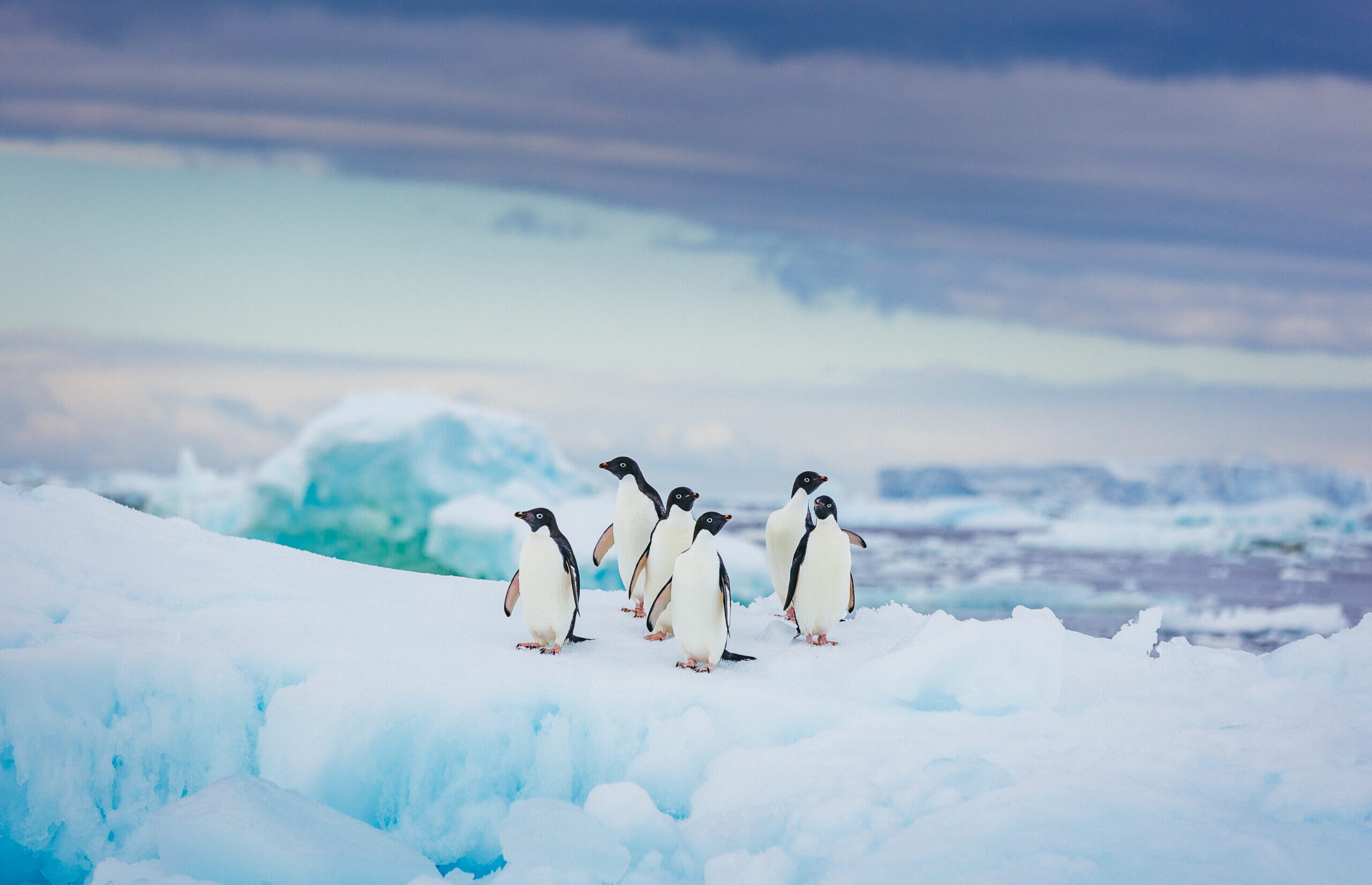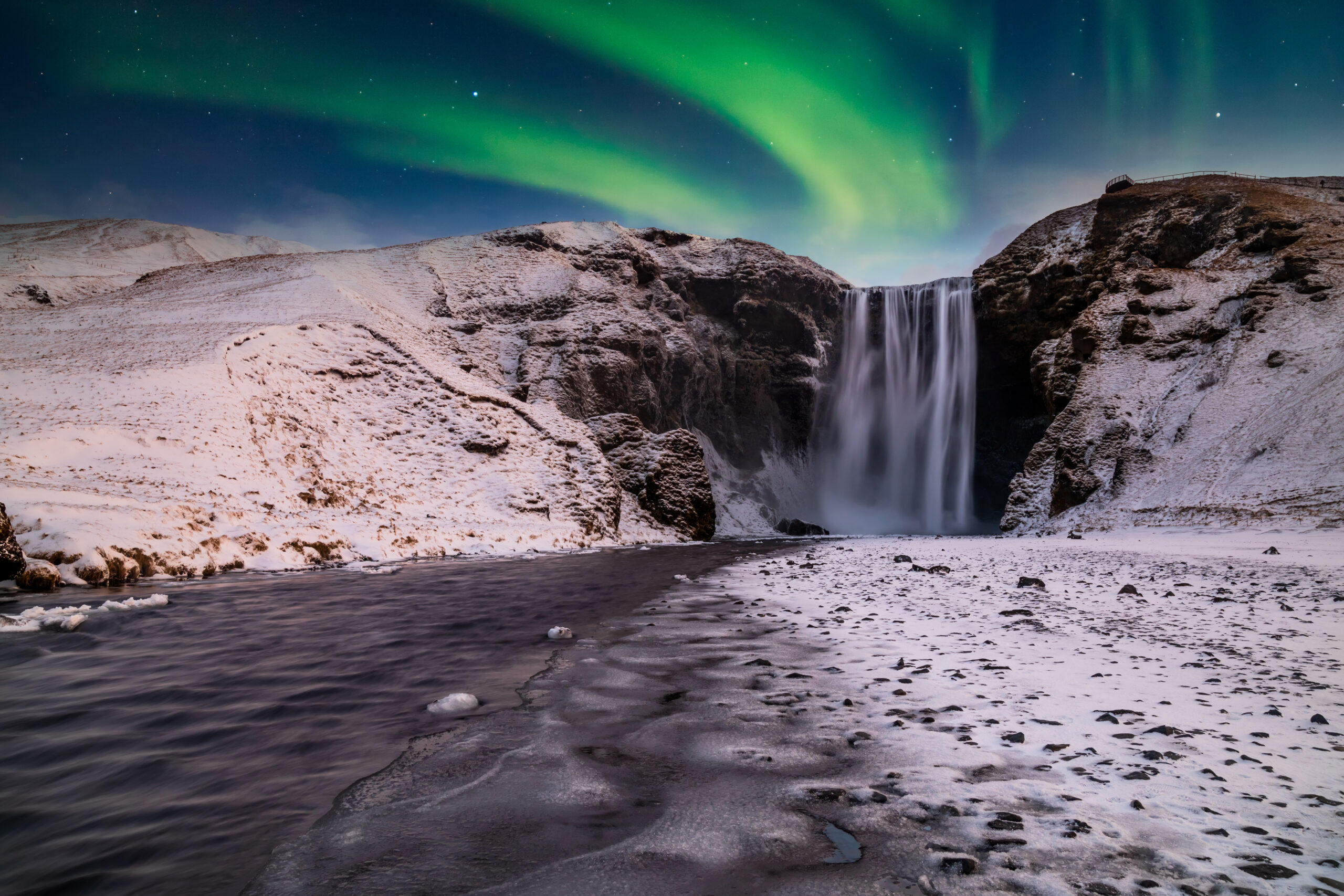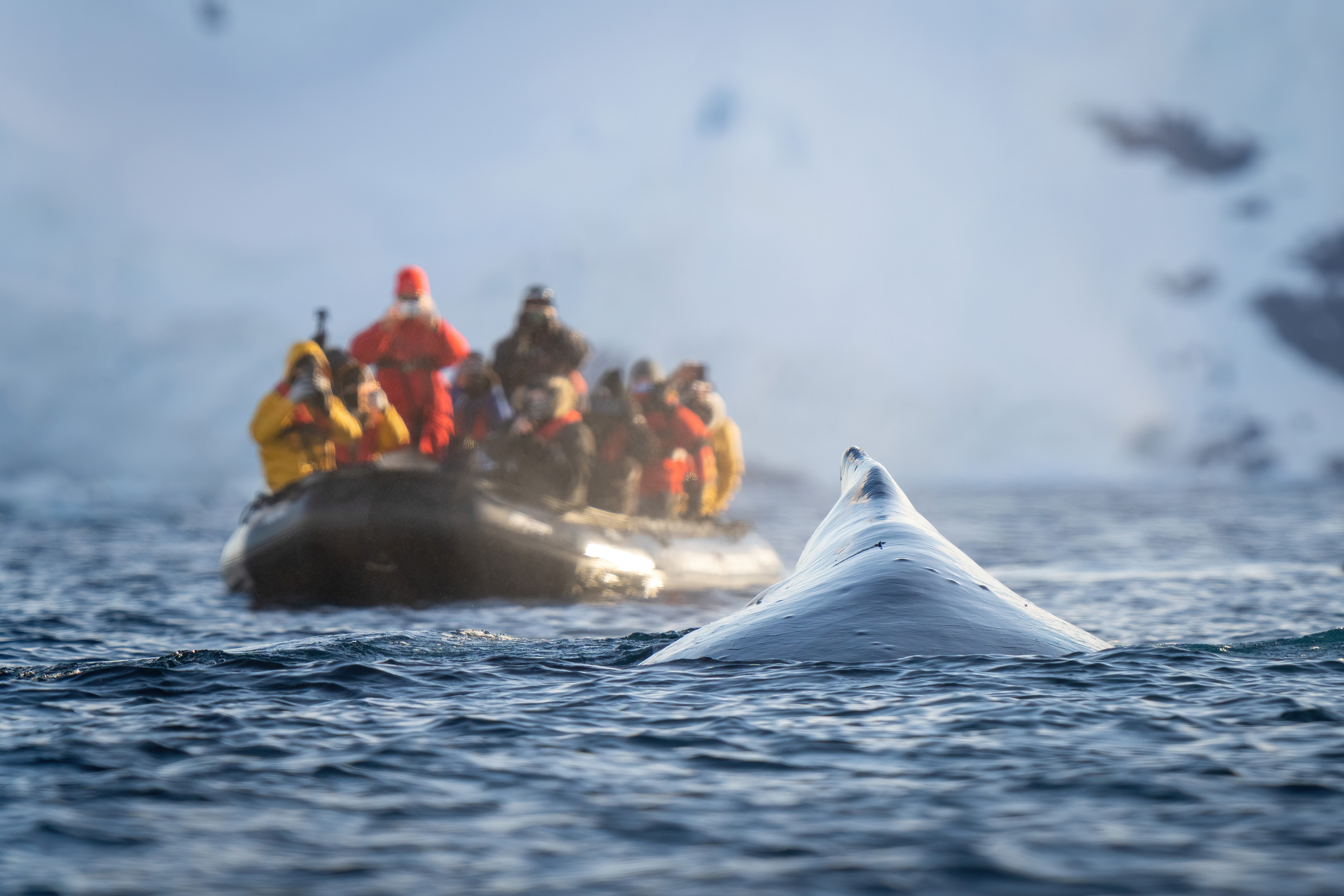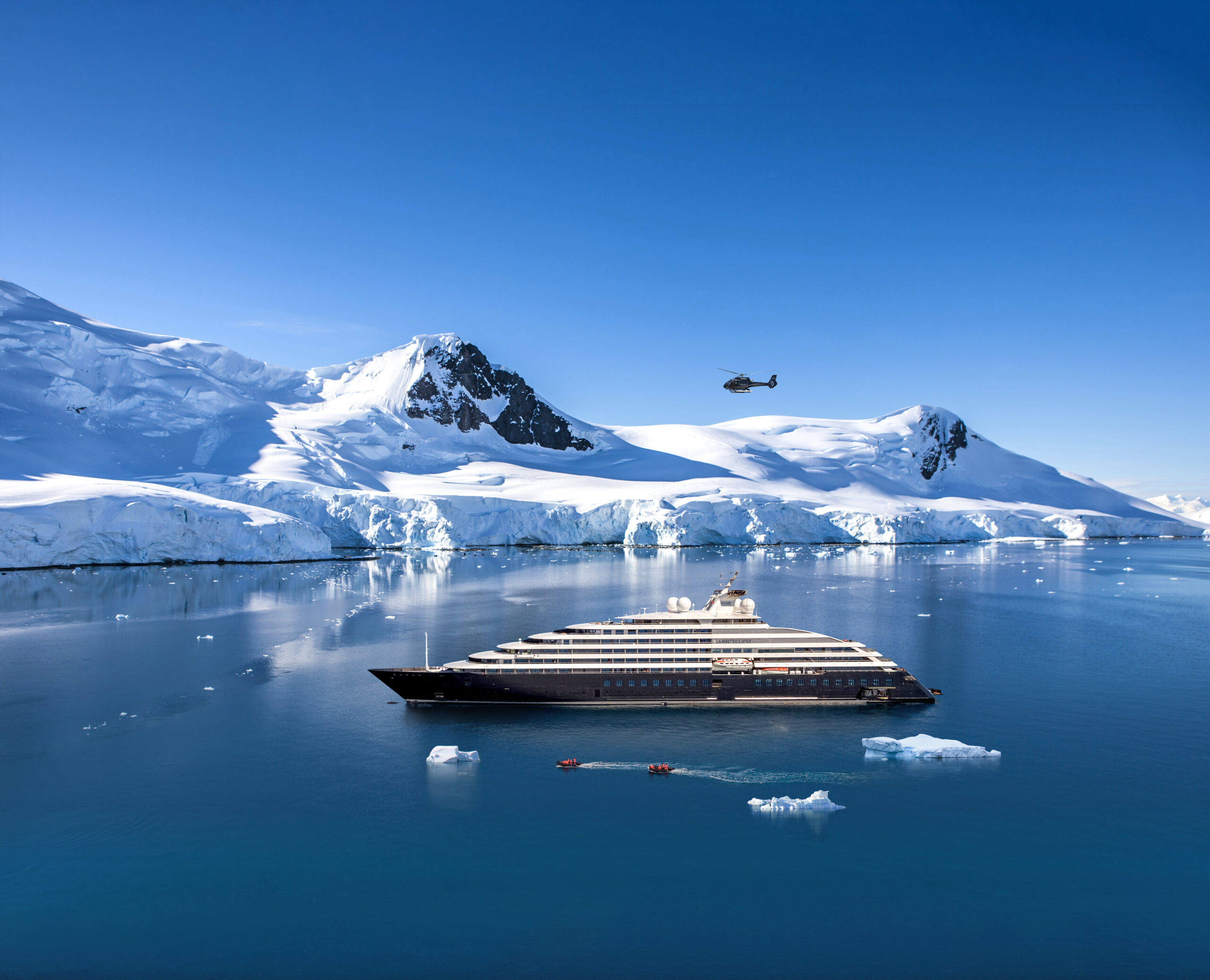Expedition Cruises for the Adventurous
Discover a different kind of cruising experience beyond the boundaries of traditional holidays. Expedition cruises are designed to take you to the most wondrous and least-visited locations in the world, including the Arctic and Antarctic regions, which were virtually unexplored a century ago. Undertake the adventure of a lifetime aboard a purpose-built ship that combines comfort and adventure, and experience sights and cultures that are rarely seen by humanity. Get up close with local wildlife, discover a wild beauty like nothing else you’ve ever seen, and get out of your comfort zone for a once-in-a-lifetime experience.
On an expedition voyage, the journey itself is an adventure, and the off-the-beaten-path destinations you visit are the highlight. The ship is merely a means of transportation. In a way, being on an expedition cruise is like being part of a team of explorers on an adventure. It shares more similarities with safari holidays in Africa or trekking trips in the Peruvian Andes than with traditional cruises. You’ll explore isolated wilderness areas and observe the unique wildlife that inhabits them. Your days will be dictated by the movements of wild animals, changing ice conditions, and the weather.
If you’re more interested in experiencing a place rather than simply going on a cruise, this type of cruising is the perfect choice for you. Unleash your inner voyager and embark on the adventure of a lifetime.
Expedition Cruise Offers
Highlights of Antarctica
A Video from Scenic Luxury Cruises & Tours
Which Companies Offer Expedition Cruises?
Typically you’ll find two types of expedition cruise operators – specialised expedition companies that have emerged in recent years due to the growing popularity of this type of cruising; and more traditional operators who have added expedition cruises to their existing offerings. Having said that, you may be familiar with some of these cruise line names, and others may be more unfamiliar to you.
Specialist Expedition Operators
Where Can I go on an Expedition Cruise?
You’ll find expedition cruises to far-flung ports of call all over the world, but many expedition vessels will spend nearly all of their time in either the Antarctic or the Arctic regions, the last two places in the world with large uninhabited areas without infrastructure or tourism. Other key destinations known for expedition itineraries include the Galapagos, the Amazon River, Costa Rica, Panama, and Alaska. Here’s a quick snapshot of what to expect when you set sail in each of these regions.
Almost impossible to reach other than by ship, exploring Antarctica is a true once-in-a-lifetime adventure. Usually beginning in Ushuaia, Argentina, or Punta Arenas, Chile, from there, you set sail for a two-day crossing of the Drake Passage, a notoriously rough waterway. Once you get through the Drake, an incredible opportunity to explore the icy coast of this continent awaits you. Once in Antarctica, you’ll use zodiacs to embark on day activities, liking visiting penguin colonies, hiking through the snow to see early explorer huts, sailing through ice-filled fjords, and (hopefully) seeing majestic whales breaching the icy waters.
The Arctic is a land of ice, snow, and majestic icebergs. It is home to diverse wildlife, historical sites linked to early explorers, and Indigenous communities like the Inuit who have inhabited the area for centuries. The options in the Far North are far more diverse than those in Antarctica, with sailings that focus on exceptional ports of call such as Svalbard, Greenland, Iceland, the Canadian Arctic including the renowned Northwest Passage, and even the North Pole. You’ll be captivated by ice-carved mountains, and glaciers, encounters with polar bears, reindeer, foxes, and awe-inspiring bird colonies.
Discover the hidden treasures of the Galapagos Islands aboard expedition cruises from renowned companies like Hurtigruten, Lindblad, Silversea, and Celebrity Cruises. Immerse yourself in the breathtaking wildlife and pristine landscapes of this untouched paradise, which is a classic market for adventure cruises. Comprising 19 larger islands, with only four inhabited, the Galapagos offers typical weeklong routes that incorporate visits to around five or six islands. However, many cruise lines provide back-to-back itineraries, allowing travellers to create a more diverse and extended sailing experience.
There are numerous cruise companies that specialise in offering exciting sailings up the mighty Amazon River, with a particular focus on the portion located in Peru in South America. These expeditions are typically facilitated by small vessels that operate throughout the year on the river. During most Amazon river cruises, there are opportunities to visit small villages along the river, although the primary focus remains on observing local animals from the comfort of the vessel, including lazy three-toed sloths, colourful toucans and macaws, taricaya turtles, and the captivating pink dolphins that inhabit the Amazon.
When people think of an Alaska cruise, they usually picture the sailings offered by popular big-ship lines like Royal Caribbean, Princess Cruises and Holland America. These traditional voyages mainly focus on the tourist towns of Juneau, Skagway, and Ketchikan found in the Southeast. However, you can also embark on a thrilling Alaskan expedition cruise and uncover the hidden wonders of America’s Last Frontier. Witness breathtaking encounters with majestic whales, mesmerizing glaciers, and enchanting wildlife, all while exploring the untouched and wild beauty of the more unexplored side of Alaska.
What's it like aboard an Expedition Ship?
The typical expedition vessel is purpose-built for remote and rugged areas. These small and agile ships have the advantage of navigating into secluded bays and waterways that larger vessels can’t reach. While some now offer luxurious amenities, the main focus remains on immersive offshore experiences and ensuring your safe journey to far-flung destinations.
Besides their maneuverability, these small ships are extremely durable. Designed with reinforced hulls, they can break through ice in polar regions. They are also equipped with ample storage for fuel and food, allowing them to sustain long periods without resupply. If you’re setting off on a polar exploration, durability is even more important. Check what your vessel’s polar-class rating is as this indicates its toughness. The polar classes range from PC1 (highest) to PC7, with PC1 being a true icebreaker capable of navigating glacial regions year-round. Currently, there are no passenger vessels rated PC1, but the new Ponant icebreaker, Le Commandant Charcot, holds a high PC2 rating, allowing it to navigate through ice, even reaching the North Pole. Vessels with a PC7 rating can only sail in thin first-year ice, while those without polar-class ratings should avoid icy areas altogether.
Expedition ships also usually carry their own landing craft to assist with disembarkation and onshore activities. These are typically small inflatable boats. They also carry a range of adventure gear, including kayaks, paddleboards, snowshoes, snorkeling equipment, wetsuits, and sometimes even diving gear. Some even offer submarines for underwater adventures, as well as helicopters for breathtaking aerial views.
Designed with practical amenities in mind, most expedition vessels will feature “mud rooms” where you can store your outdoor clothing and gear, and some even provide waterproof rubber boots for wet landings on beaches. Instead of a traditional cruise director, expedition routes are led by an “expedition team” made up of knowledgeable destination experts, scientific experts, and often a historian who will guide shore visits and deliver informative lectures on board. Additionally, many also employ photography experts who can assist you in capturing the stunning scenery and animals you come across.
While certain expedition ships now offer upscale dining rooms, elegant bars, and onboard spas, these luxurious touches play a secondary role to the enriching onshore adventures that truly define the adventure of exploration.
In the past, expedition ships usually accommodated no more than 200 passengers. However, some of the newer vessels are designed to carry up to 500. It’s worth noting, though, that having fewer than 200 passengers is ideal, as larger ships may face restrictions at certain landing sites. For example, in remote areas like Antarctica, only 100 travellers can go ashore at a time. So, if you happen to be on a ship that carries up to 500 passengers, you may have to wait for your turn to disembark, potentially impacting your time ashore and the activities you can participate in.
Insider Tip for a Polar Cruise
Don’t expect the itinerary you booked to be the exact one you experience. Embrace the unexpected and you’ll be pleasantly surprised. You should be prepared for last-minute changes – ports can be skipped, excursions cancelled, and the wildlife you’re eager to see may not make an appearance. The weather also holds sway over your opportunities to explore offshore. On an expedition cruise, you need to be able to keep an open mind and adapt to changing circumstances, it’s the best way to find joy in the experience.


















